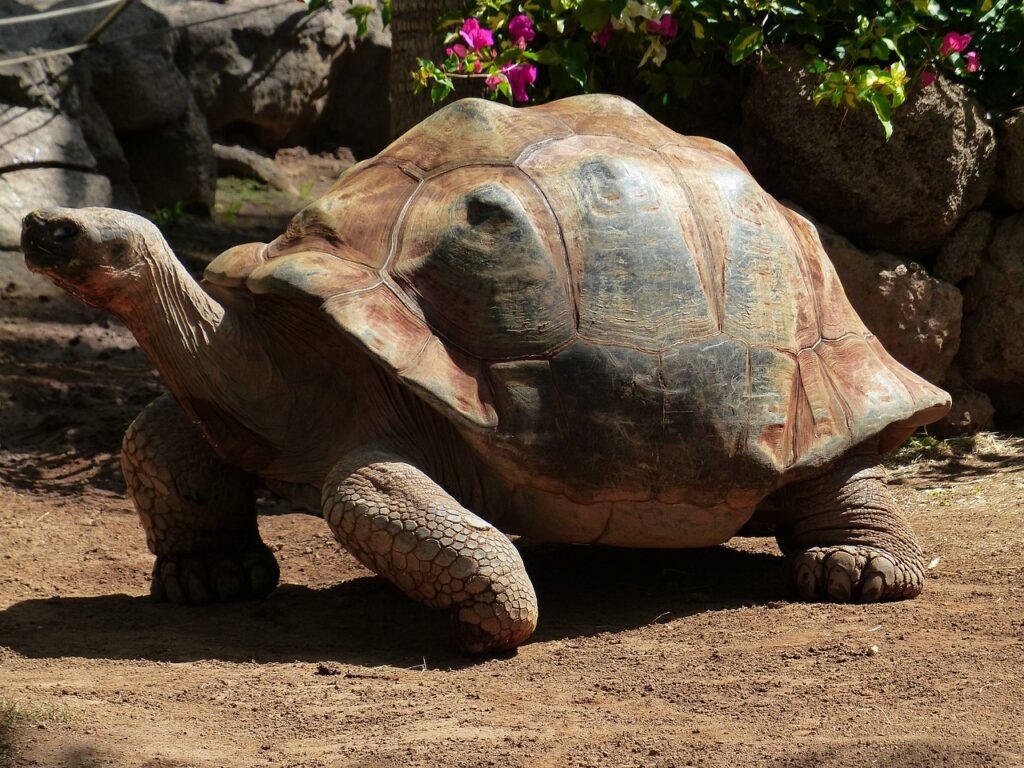To properly care for your Sulcata tortoise, it’s important to understand their specific temperature needs. In this section, we will delve into the ideal temperature requirements for Sulcata tortoises. This includes providing an explanation of Sulcata tortoises and the factors that influence their temperature needs.
Key Takeaways
- Sulcata tortoises require a specific temperature range to thrive and stay healthy.
- The ideal temperature for sulcata tortoises is between 75-85 degrees Fahrenheit during the day.
- At night, the temperature should not drop below 70 degrees Fahrenheit.
- It is important to provide a temperature gradient within the enclosure, allowing the tortoise to choose the desired temperature.
- Using a combination of heat lamps, heating pads, and thermometers can help maintain the appropriate temperature.
- Monitoring the temperature regularly is crucial to ensure the tortoise’s well-being.
- Extreme temperature fluctuations can be harmful to sulcata tortoises and may lead to health issues.
- Providing a basking spot with a higher temperature can help the tortoise regulate its body temperature.
- It is essential to create a suitable habitat that mimics the natural environment of sulcata tortoises, including temperature, humidity, and lighting conditions.
- Consulting with a reptile veterinarian or experienced tortoise keeper can provide further guidance on maintaining the correct temperature for sulcata tortoises.
Explanation of Sulcata Tortoises

Sulcata tortoises are amazing reptiles! They come from the Sahara Desert and have a unique shell with deep ‘sulci’ for protection and blending in. And, they can dig burrows! Not just plain holes, but deep and wide enough to fit multiple tortoises in at once!
These tortoises are also known for their voracious appetite. They love grasses and can eat large amounts. Plus, they have strong jaws and teeth to chew it all up!
These animals have a long lifespan too – up to 80 years with proper care. That’s why they’re popular pets, but you need enough space and resources to keep them happy and healthy.
Importance of Temperature for Sulcata Tortoises
Temperature is key for the survival of sulcata tortoises. Warmer temperatures help regulate their metabolism, digestion, and activity levels. As they’re from hot and arid regions of Africa, they require a warm environment. This aids digestion and boosts immunity.
Create a suitable basking spot with higher temperature than the rest of the enclosure. This allows them to regulate their body heat and mimic their natural habitat. Additionally, vary the temperatures in the enclosure for them to effectively cool down.
Don’t forget to provide heating equipment such as heat lamps or radiant heat panels! Monitor the temperature with thermometers to ensure it stays within the optimal range for sulcata tortoises. Give them the best environment they need for their enjoyment and overall well-being!
Optimal Temperature Range for Sulcata Tortoises
To ensure the wellbeing of your Sulcata Tortoise, it is crucial to provide them with the optimal temperature range. Maintain an ideal daytime temperature and ideal nighttime temperature to create a comfortable and suitable habitat for your pet. Learn about the description of the ideal daytime temperature and the description of the ideal nighttime temperature.
Description of Ideal Daytime Temperature
Sulcata Tortoises need the perfect daytime temperature to stay healthy and happy. 80 to 95 degrees Fahrenheit is ideal for them, allowing their bodies to digest, metabolize, and move well.
Keeping the temps consistent and appropriate is key. These tortoises are used to sunbathing during the day and seeking shelter when it gets too hot in their natural habitat. Replicating this in captivity will help them feel at home.
Be aware – too low (below 70°F) or too high (above 100°F) temperatures can threaten their health and even cause heat stroke!
These creatures come from the Sahel region of Africa, where they’ve evolved over thousands of years to survive the desert climate. They have special adaptations that let them regulate body temperature.
By creating an environment similar to their natural habitat, you’re giving your Sulcata Tortoise the best chance at physical and mental well-being. Make sure to keep them cozy at night too!
Description of Ideal Nighttime Temperature
For sulcata tortoises, the ideal nighttime temperature is key. 70-80 degrees Fahrenheit should be the range – this’ll allow their body temperature to stay in tune. Providing a cool hidey-hole can also help, with a temp around 70 degrees, so they can lower body heat if it pleases.
Drastic temp fluctuations can cause distress, so consistency is absolute best. A reliable thermometer can help you keep track – make sure the temperature’s on par and don’t slack!
By providing an ideal nighttime temperature range, your pet will thrive and be content. Don’t miss the chance to show your furry friend the best care – it’ll go a long way and have no end!
Providing the Right Temperature for Sulcata Tortoises

To ensure your Sulcata tortoise stays healthy and comfortable, it’s essential to provide the right temperature. Create a suitable habitat by focusing on two key aspects: creating the right environment and exploring heating options. The first sub-section will guide you in setting up an ideal habitat, while the second sub-section will cover different heating options to meet your tortoise’s temperature requirements.
Creating a Suitable Habitat
For Sulcata Tortoises to thrive, their habitat must be suitable. To do this, temperature must be monitored and heat sources provided. Temperatures should be 80-85°F (26-29°C) during the day and 70-75°F (21-24°C) at night. Heat lamps or ceramic heaters can create basking spots of 90-95°F (32-35°C). Provide shaded areas for periods of hot weather, and ensure proper ventilation and humidity levels.
Julia, a Sulcata Tortoise owner, learnt the importance of temperature when her tortoise, Sheldon, became ill due to inadequate heat. After installing heat lamps and regulating temperatures more carefully, Sheldon regained his energy and enthusiasm.
Temperature control and recreating the natural environment are key to supporting tortoise well-being. So, let’s get to it! Build the tortoise mansion – but remember, no guest bedroom!
Enclosure Size and Design
When it comes to Sulcata Tortoises, getting the right size and design for the enclosure is a must. Creating a suitable environment for them is essential.
For the perfect enclosure, the dimensions and features must be appropriate. This includes sufficient space for the tortoise to roam, as well as proper air flow and lighting. Plus, it must be made of sturdy materials that can hold their weight and stop them from escaping.
See below for the recommended enclosure dimensions and design for Sulcata Tortoises:
| Size of Tortoise | Enclosure Size (Length x Width) | Minimum Height | Materials |
|---|---|---|---|
| Hatchling | 3 ft x 2 ft | 1 ft | Wood |
| Juvenile | 8 ft x 4 ft | 2 ft | Concrete |
| Adult | 12 ft x 8 ft | 4 ft | Brick |
Remember, these are just the minimum recommendations. Giving them a larger enclosure is always beneficial for their wellbeing.
To make their environment more interesting, you can add natural elements like rocks, plants, and hideaways. This will not only make it look nicer, but it’ll give the tortoises a chance to move around and stay mentally stimulated.
Plus, with their own ‘climate control’, Sulcata tortoises don’t have to be concerned about global warming – they can just adjust the temperature gradient of their enclosure!
Temperature Gradient within the Enclosure
Temperature is key for keeping Sulcata Tortoises healthy. Set up different heat sources in the enclosure. View the temperature guide below:
- Cool Zone: 75-85°F (24-29°C). A comfy rest spot.
- Basking Zone: 100-105°F (38-41°C). Mimics natural sunlight.
- Night Zone: 70-80°F (21-27°C). Allows tortoise to rest & cool down.
Heat lamps, under-tank heaters, thermostats – use these to regulate & monitor temperatures accurately. Also create hideouts within each zone, so your tortoise can choose their preferred comfort level.
Creating a temperature gradient in your enclosure will help your tortoise stay healthy & happy.
Heating Options for Sulcata Tortoises
Creating a warm environment for sulcata tortoises is essential for their wellbeing. These reptiles come from hot African regions, so they need special heating options in captivity.
For a perfect habitat, you must provide both a warm basking area and a cooler zone. Heat lamps, ceramic heaters, under tank pads and radiant heat panels are all viable options.
Adding a thermostat to keep the temperature constant is ideal. Cold temperatures can be harmful, leading to respiratory infections or low metabolism. That’s why you need a reliable thermometer to monitor temperature accurately.
Heating is key to giving your sulcata tortoise a happy life. Choose the right options and keep the habitat at the right temperature. Heat up!
Heat Lamps
Heat lamps are vital for giving sulcata tortoises their ideal temperature. They use heat bulbs to make a cozy ambiance like their natural habitat. By using the correct lamps, tortoise owners can keep their pets safe.
Let’s look at the table below to find out about the different types of heat lamps available:
| Type | Features |
|---|---|
| Ceramic Heat | Provides constant heat without light |
| UVB Bulbs | Offers both heat and necessary UVB |
| Infrared | Emits heat while maintaining darkness |
Ceramic heat lamps are great for night-time heating as they just give off heat without any light. UVB bulbs not only give off warmth, but also provide the essential UVB radiation for good calcium absorption in tortoises. Infrared lamps are perfect for basking spots as they put out intense heat while keeping the area dark for resting.
It’s essential to put the lamp at a safe distance from the tortoise enclosure to avoid burns or overheating. It’s best to have a thermometer to keep consistent temperatures in the range of 75-85°F (24-29°C) during the day and around 70°F (21°C) at night.
Pro Tip: Always talk to a reptile veterinarian or an expert in tortoise care to understand the exact heating needs for your sulcata tortoise. Different species may require different temperatures, so make sure you give them the perfect conditions for great health and well-being. Give your sulcata tortoise the perfect under tank heating – no one likes a cold-blooded roommate who steals all the blankets!
Under Tank Heating
Under Tank Heating for Sulcata Tortoises is vital for creating the right temperature. Heat sources placed underneath the tank imitate their natural habitat. Our table outlines different aspects of Under Tank Heating:
| Aspect | Details |
|---|---|
| Heat Source | Heat mats or cables |
| Temp Range | 80-85°F (26-29°C) |
| Placement | One side of tank |
| Thermostat | For regulating temp |
Size of enclosure and hiding spots with substrate that retains heat also matter. The Tortoise Trust states that wrong heat gradients can cause health issues in Sulcata Tortoises. Get your tortoise some ‘tortoise Tinder‘! Hot pads or tapes will create a ‘hot spot’ for them to bask in.
Heat Pads or Heat Tapes
Heat pads and heat tapes are essential to ensure the right temperature for Sulcata Tortoises. They provide warmth and create a perfect habitat. Heat pads offer high efficiency and long-lasting performance. They have limited control, but are easy to install. Heat tapes allow adjustable settings for more flexibility. Though, installation requires professional help and may be pricey.
Reptile Magazine states that proper heating is key for Sulcata Tortoises. Ensure their comfort by keeping an eye on the temperature!
Monitoring and Adjusting Temperature

To ensure the optimal temperature for your sulcata tortoises, use thermometers and maintain consistent temperature levels. By monitoring and adjusting the temperature, you can create a comfortable and healthy environment for your tortoises. Thermometers and temperature consistency play crucial roles in maintaining their well-being.
Using Thermometers
Thermometers are essential for regulating temperature. They help us accurately measure and track heat levels, allowing us to control temperature.
Let’s explore the practical use of thermometers in this table:
| Thermometer Type | Description | Temperature Range |
|---|---|---|
| Mercury | Traditional glass thermometer utilizing mercury | -40°C to 500°C |
| Digital | Modern device with digital display | -50°C to 200°C |
| Infrared | Measures temperature without contact | -20°C to 550°C |
In addition, there are specialized thermometers used in medical and industrial applications.
It’s important to consider factors like accuracy, response time, and durability when choosing a thermometer.
The history of thermometers dates back centuries. Galileo Galilei invented the first in the early 17th century. Over time, technology has enabled us to make more accurate and precise devices.
Using thermometers is key to monitoring and adjusting temperature. By understanding their types and capabilities, we can manage temperature in various settings. From measuring body temperature to industrial processes, thermometers remain indispensable tools for maintaining optimal conditions.
If preserving consistent temperature levels was a sport, I’d be the Olympic gold medalist in adjusting, juggling, and sweating profusely.
Maintaining Consistent Temperature Levels
Consistent temperature levels are essential for effective control.
Monitoring and adjustments are necessary to achieve this. Advanced sensors and monitoring equipment help measure and analyze temperature variations. Calibrating and maintaining HVAC systems is key. Automated controls enhance accuracy and efficiency. Insulation helps retain desired temperatures and lessens energy use.
Maintaining consistent temperatures has benefits in various industries e.g. food processing. ASHRAE research shows it improves product quality and extends shelf life.
In summary: monitoring and adjusting temperature – better than melting or freezing your face off!
Frequently Asked Questions
Q: What temperature do sulcata tortoises need?
A: Sulcata tortoises require a warm temperature range of 80-85 degrees Fahrenheit (27-29 degrees Celsius) during the day and a nighttime temperature of 70-75 degrees Fahrenheit (21-24 degrees Celsius).
Q: Can sulcata tortoises tolerate cooler temperatures?
A: While sulcata tortoises can tolerate slightly cooler temperatures for short periods, it is essential to provide them with the optimal temperature range mentioned above to ensure their well-being and overall health.
Q: Are heat lamps necessary for sulcata tortoises?
A: Yes, heat lamps or basking bulbs are necessary to create a warm environment for sulcata tortoises. These lamps should be placed at one end of the enclosure to create a temperature gradient, allowing the tortoise to choose its preferred temperature zone.
Q: How can I measure the temperature in a sulcata tortoise enclosure?
A: You can use a digital thermometer with a probe to accurately measure the temperature in the enclosure. It is important to monitor the temperature regularly to ensure it remains within the appropriate range for your sulcata tortoise.
Q: What happens if the temperature is too low for my sulcata tortoise?
A: If the temperature is consistently too low for a sulcata tortoise, it can lead to health issues such as respiratory problems, decreased appetite, and a weakened immune system. Providing the correct temperature range is crucial for their overall well-being.
Q: Are there any cooling requirements for sulcata tortoises?
A: Sulcata tortoises do not typically require additional cooling methods unless the temperature exceeds 90 degrees Fahrenheit (32 degrees Celsius). In such cases, you can provide a shaded area or mist the enclosure to help them cool down.
Conclusion
Evaluating the perfect temperature for sulcata tortoises? Consider their natural habitat! It’s important to draw conclusions about the optimal temperature range for these reptiles.
Sulcata tortoises come from dry regions in Africa – with high temperatures during the day and low at night. In captivity, replicate these conditions to keep them healthy.
The recommended temperature range for sulcata tortoises is between 75°F and 95°F (24°C to 35°C). Gradients within this range let them regulate their body temperature, thermoregulate, and stay healthy.
Here are some tips for creating a thermal environment for your sulcata tortoise:
- Provide a heat source: Use a heat lamp or pad to create a warm spot. This mimics basking under the sun.
- Utilize a thermostat: Use it to monitor and control the temperature. This prevents overheating or chilling.
- Incorporate a cooler area: Alongside the warm spot, create a shaded and cooler zone. Let your tortoise choose between temperatures.
- Monitor ambient temperature: Use a thermometer away from direct heat sources. This helps ensure consistency in their living space.
These suggestions mimic their natural habitat and promote good health for your sulcata tortoise!
References




